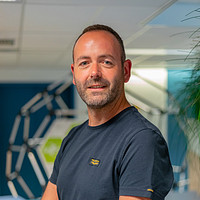Various companies in diagnostic testing struggle with the same “valley of death” challenge. In order to further develop their sensing application, they rely on the technological readiness of easy and reproducible read-out systems. Photonic chips can be very sensitive sensors and can be made application-specific when coated with a properly chosen bio-functionalized layer. Here the challenge lies in the optical coupling of the active components (light source and detector) to the (disposable) photonic sensor chip. For the technology to be commercially viable, the price of the disposable photonic sensor chip should be as low as possible. The coupling of light from the source to the photonic sensor chip and back to the detectors requires a positioning accuracy of less than 1 micrometer, which is a tremendous challenge.
In this research proposal, we want to investigate which of the six degrees of freedom (three translational and three rotational) are the most crucial when aligning photonic sensor chips with the external active components. Knowing these degrees of freedom and their respective range we can develop and test an automated alignment tool which can realize photonic sensor chip alignment reproducibly and fully autonomously.
The consortium with expertise and contributions in the value chain of photonics interfacing, system and mechanical engineering will investigate a two-step solution. This solution comprises a passive pre-alignment step (a mechanical stop determines the position), followed by an active alignment step (an algorithm moves the source to the optimal position with respect to the chip). The results will be integrated into a demonstrator that performs an automated procedure that aligns a passive photonic chip with a terminal that contains the active components. The demonstrator is successful if adequate optical coupling of the passive photonic chip with the external active components is realized fully automatically, without the need of operator intervention.
Projectduur: 1 april 2020 t/m 31-7-2022
Partners: Universiteit van Twente, Photonics NL, Beta Applied Research B.V., Qurin B.V., Delta Diagnostics B.V., Surfix B.V., LioniX International B.V., PHIX B.V., Huygens Engineers B.V., Salland Engineering B.V.
Projectleider: Saara-Maarit Reijn en Jonathan Montanes

